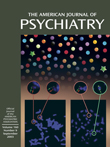Psychiatric Neuroimaging Research: Contemporary Strategies
Research using neuroimaging techniques has provided essential links in understanding the relationship between brain and behavior. Although reports of such studies are now ubiquitous in the field of psychiatry, the complexities of these techniques and of the underlying subject matter make such studies difficult both to design and to interpret. As Wayne Drevets discusses in his chapter in this text regarding major depressive disorder, the results of neuroimaging studies can seem on face value to implicate most areas of the brain and to conflict across studies regarding the location and direction of the abnormalities found (p. 256). Such observations are not limited to mood disorders and can make a perusal of this literature initially confusing and even disheartening. A critical assessment of the multiple choices and subsequent ramifications involved in designing these types of studies is required to make sense of this already huge body of research.
A large number of interrelated issues confront the individual who seeks a better understanding of neuroimaging studies; these include types of hypothesis, study design, properties of different types of scanners, the choice of methods used for image interpretation, and factors related to the population under study. Designing an introduction to this area that is both sophisticated enough to do justice to the issues involved and not overwhelming is not simple. This text, which arose in large part from a seminar series at Massachusetts General Hospital, uses the strategy of having prominent researchers provide in-depth discussions of examples from their own work, supplemented by brief pertinent general reviews. Rather than grouping studies by diagnostic category, the chapter authors focus on examining experimental paradigms, often comparing how a given paradigm is used in more than one disorder to illuminate how experiment and disorder interact.
The chapters exhibit a variety of approaches, depending on the author and subject involved. Each chapter can be read individually, but there is also a logical progression of topics. The book begins with a review of morphometric magnetic resonance imaging studies in schizophrenia. It then moves on to functional imaging, beginning with a concise introduction by Stephan Heckers and Scott Rauch to studies of cognitive function. The next several chapters look at examples of different paradigms, including implicit information processing, provoking symptoms or particular emotional states, and pharmacological challenge. Symptom capture is described as a strategy for imaging the pathophysiology associated with hallucinations and tics, and Mark George et al. present some of their work in which transcranial magnetic stimulation is used to “temporarily take specific regions off-line” while observing changes in behavior and brain activation.
The next section covers the areas of studying treatment response and in vivo imaging of neuroreceptors, ending with a discussion of ways in which structural and functional imaging can complement each other. The remainder of the book touches on several areas, including a review of methodology and current research in magnetic resonance spectroscopy, the use of neuroimaging in developmental disorders and animal research, and a more speculative chapter on the possibility of using neuroimaging as a bridge to connect genes and behavior.
This book provides examples from many different types of neuroimaging research in several psychiatric conditions, but it is not (nor is it intended to be) a comprehensive review. This type of research draws from disciplines ranging from physics to cognitive neuroscience to psychopathology, and the chapters are uneven in the amount of background information they provide in these different areas. Nevertheless, the authors have succeeded admirably in providing a window on some of the exciting advances already achieved, the questions yet to be addressed, and the thought process behind the complexities of neuroimaging research. It is highly recommended for both researchers and nonresearchers who would like to learn more about this challenging but invaluable field.



